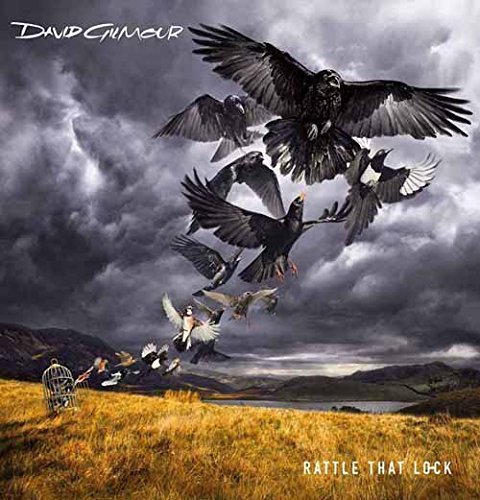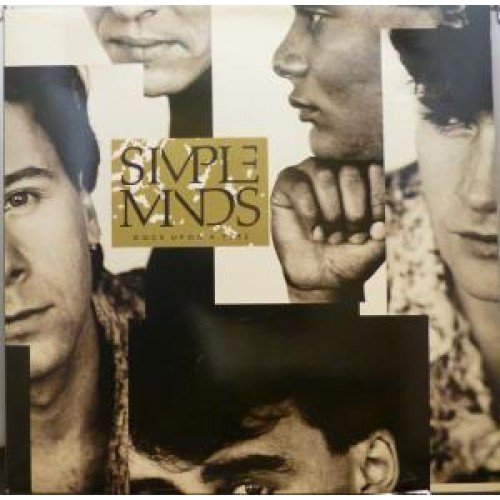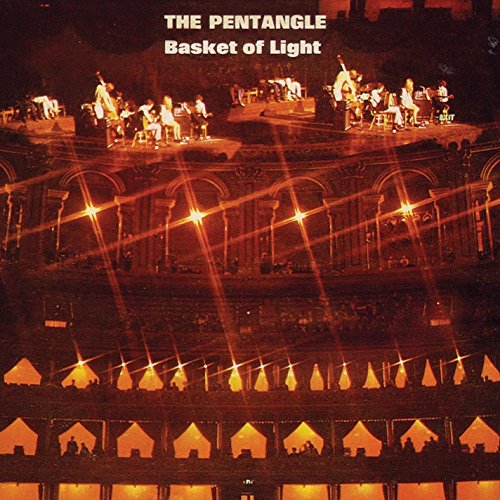What are you listening to and WHY might anyone be interested? (Vol. XIII)
Posted by: Richard Dane on 01 January 2017
2017 has arrived today, so time to start this thread afresh.
Last year's thread can be found here;

It’s strange, the way a brief moment in a long career—a detour, even—can become the object of intense focus after the fact. An album that isn’t seen as a landmark, or a triumph, when it’s first released can assume outsized importance years, even decades later, when a new audience discovers it. Miles Davis’s On the Corner could be seen in this light; the subject of critical derision upon its release in 1972, it sold poorly and went out of print soon afterward, but beginning in the 1990s, its reputation began to improve, and now it’s seen in some quarters as one of Davis’s most important albums, even described as a masterpiece.
But when Davis released On the Corner, he was trying to make a statement. He meant the album to indicate a wholesale shift in his sound—and it did. Indeed, it’s possible to infer that he put so much energy into it that when it was rejected, by critics and the public, it sent him into a kind of artistic retreat. After all, those sessions in the summer of 1972 were the last time, before his 1975 retirement, that he went into the studio with the express purpose of making an album. Everything after that was either a live recording of his road band, or a gathering up of pieces recorded as much as four or five years earlier—an eternity in Miles Time.
Sonny Rollins has never seemed to attach the same weight to his albums as Davis or, say, John Coltrane did. Since the beginning of his career, Rollins’ albums have frequently had a tossed-off quality, like they were made as obligations, because that’s what you do—you make records, then go out on the road to support them. This doesn’t make them disposable, by any means. Albums like Saxophone Colossus, Way Out West, Newk’s Time, and even later titles like East Broadway Run Down and On Impulse! are great, featuring top-shelf collaborators and some brilliant playing. But as Rollins himself will freely admit, he’d rather be on stage than in the studio, so most of his best work can be heard on live recordings. The recent Road Shows series, now up to three volumes, contains some incredible playing, and preserves some truly historic moments, like the time Rollins, Ornette Coleman and Roy Haynes shared the same stage for the first time ever, at Rollins’ 80th birthday celebration (I was there).
Our Man in Jazz, originally released in 1963, is one of those live albums. Recorded in late July 1962 at the Village Gate, it finds Rollins joined by Don Cherry, who had recently left Ornette Coleman’s quartet, on pocket trumpet; they’re backed by the saxophonist’s bassist of choice, Bob Cranshaw, and drummer Billy Higgins, also a veteran of the Coleman band as well as about a million hard bop sessions for Blue Note and other labels.
This was primarily a live band, and a short-lived one. Rollins, Cherry and Higgins, accompanied by bassist Henry Grimes, would enter the recording studio together in February 1963, tracking three tunes—“You are My Lucky Star,” “I Could Write a Book,” and “There Will Never Be Another You”—for a multi-artist compilation, but that was the extent of their studio output. That spring, they undertook a European tour, from which multiple bootleg recordings have appeared over the years; then the band split up, and all involved moved on (except for Grimes, who disappeared from public life for three decades).
The original Our Man in Jazz featured only three tracks—a side-long exploration of “Oleo,” and versions of “Dearly Beloved” and “Doxy”—and was not regarded as a landmark Rollins album, even though it was one of the first things he released after a hiatus that had begun in 1959. Now, though, a box has emerged, on the Solar label out of Spain, that adds 18 previously unreleased recordings, and the full-length “Dearly Beloved,” from the band’s four-night stand at the Village Gate, expanding the album to a six-CD set. Complete Live at the Village Gate 1962 (get it from Amazon) is similar to Miles Davis’s 1995 box Complete Live at the Plugged Nickel 1965, in that it documents a band at work over multiple nights, allowing comparison between multiple performances of the same book of tunes. But the Davis quintet would stay together until 1968, its sound evolving from year to year, its studio albums building one on top of the other until they became one of the most beautiful and brilliant discographies in jazz. The Rollins/Cherry band, on the other hand, was a comet, rocketing across the scene and vanishing nearly as fast as it arrived.
The most immediately notable thing about these performances is their length. When these guys dug into a tune, they kept on digging. Two of the four versions of “Oleo” here are more than a half hour long, and even the released take is nearly a full minute longer on the box than it was on Our Man in Jazz. The “shortest” version of the tune runs more than 17 minutes. The album edit of “Dearly Beloved,” included here on Disc One, was eight minutes and change; the full version, found on Disc Three, runs 18:41. Other tracks, like versions of the Duke Ellington ballad “Solitude” and a series of untitled pieces apparently improvised in the moment, run between 15 and 30 minutes.
Of course, the quality of the music is also impressive as hell. The original album can seem overly loose at first listen; the opening version of “Oleo,” which is also the first thing recorded during the band’s three-night stand, drops you into a world that’s initially hard to navigate. The melody, one of Rollins’ most powerful (that’s why it’s become a standard), is rendered in an oblique and digressive manner, with the saxophonist and the trumpeter talking past each other as Cranshaw and Higgins push and shove. There’s a visceral, bluesy swing to the rhythm, with the drummer attacking in an almost martial manner at times, but it almost feels like there are two separate conversations going on, one up front and one in back.
But the deeper you get into this set, the more you absorb the band’s collective language, the clearer it becomes. A few critics have claimed that Rollins and Cherry were incompatible, that they weren’t capable of deep communication. But I think what was really going on was, people were used to hearing Cherry next to Coleman, whose style was built around extrapolations of a song’s melody. And Cherry could do that really, really well; there’s almost a giddiness to their interplay on albums like This Is Our Music and The Shape of Jazz to Come, like you’re listening to two little kids making up a song together. Rollins, though, was on the surface a more traditional jazz player, who improvised (and still does) by building on the chord structure of a tune, occasionally (okay, frequently) throwing in apposite quotes from other songs, sometimes as punctuation, other times seemingly as filler to allow him to gather his thoughts. The fuller, heavier sound of the tenor saxophone is the ideal tool for this job, just as the alto’s lighter, floatier tone is great for loose, wandering melodies.
So there’s a relative dearth of unison melodic statements here—Rollins and Cherry aren’t lining up side by side, the way, say, Hank Mobley and Lee Morgan might. Instead, one will handle the melody while the other tosses in little interjections or sidelong comments. Rollins murmurs, Cherry chirps. Also, every member of the ensemble gets a surprising amount of unaccompanied solo time. This was not a band that charged forward as one; it was a band that let each member make his own statement, and occasionally came together, mostly to launch pieces or to bring them to an end. This is especially true of the tracks listed as “Untitled Original” A through E on the set, which are some of the most exploratory—the word “meandering” might also apply here—of Rollins’ entire career. But they even adopt this fragmentary approach when tackling pieces like “St. Thomas” or “Three Little Words.” This is music that’s all about the moment. If what Rollins, or Cherry, or Cranshaw, or Higgins is playing at any given instant is interesting, then that’s success. Turning it into a cohesive piece with a beginning, an end, and structure in the middle isn’t the point. Thus, the best way to listen to Complete Live at the Village Gate 1962—which any Sonny Rollins fan should absolutely do—is to drift along with it, for maybe an hour or so at a time (the full set runs just under seven hours), and let the moments of brilliance catch your ear. Get it from Amazon.
—Phil Freeman
EST - 301
An early evening attitude adjuster.

(1996)
A musical change of tack.
Dave Gilmour
Rattle That Lock - 24/96

Edward
seakayaker posted:Just finished.......
Sean Rowe - New Lore
A fantastic album!
I've seen this posted enough times by the people i can rely on for interesting recommendations so i'm going to purchase ![]()
First one of the evening. Got this album playing whilst i'm in and out of the kitchen cooking our dinner.
David Gray - White Ladder

james n posted:seakayaker posted:Just finished.......
Sean Rowe - New Lore
A fantastic album!
I've seen this posted enough times by the people i can rely on for interesting recommendations so i'm going to purchase
I'm fairly sure you won't regret it and then go on to get his other albums ![]()
Peter Erskine trio - As it was

From allaboutjazz.com:
Over the course of five years in the 1990s, drummer Peter Erskine, pianist John Taylor and bassist Palle Danielsson came very close to perfecting the contemporary piano trio presentation. Across four ECM releases, You Never Know (1993), Time Being (1994), As It Is (1996) and Juni (1999), the international group, all with prior ECM history, came together under the uncustomary leadership of a drummer. The body of their work as a collective reflected their individual aspirations toward sharing the complimentary legacy of the format with more personal statements, albeit, ones that were not usually outspoken. The box set release of the four Peter Erskine Trio albums takes its wordplay-title As It Was from the third of the previously mentioned albums and comes out under the ECM Old and New Masters Series banner. Taylor, the late, great British virtuoso, was the primary composer for the group though the dynamics reflected a categorically democratic rendering of the pieces as was the wish of the leader. Danielsson's previous trio experiences with Bill Evans and Keith Jarrett made him uniquely qualified in this setting. Erskine himself had worked in the trio setting with Jan Garbarek and Miroslav Vitous and established his contacts with Taylor and Danielsson while working with Kenny Wheeler.

Red Hot Chili Peppers - Greatest Hits.
A decent selection of the Chili's choons ............. a great introduction for anyone wishing to test the waters before buying the others.
Stevee_S posted:james n posted:seakayaker posted:Just finished.......
Sean Rowe - New Lore
A fantastic album!
I've seen this posted enough times by the people i can rely on for interesting recommendations so i'm going to purchase
I'm fairly sure you won't regret it and then go on to get his other albums

I did the same, heard one, then listened to them all on TIDAL and then purchased them all. Really enjoy his music.
james n posted:First one of the evening. Got this album playing whilst i'm in and out of the kitchen cooking our dinner.
David Gray - White Ladder
My favorite David Gray album. I saw him play in a small tavern called 'The Tractor' in the Ballard neighborhood in Seattle many years ago and ended up buying most of his albums. For awhile I was playing 'White Ladder' quite a bit, it definitely made a lot of road trips.

(2001)
Maynard James Keenan doing his thing, I live in hope that there will be another album from them.
Paul Jones' blues programme on R2. Consummate pro.
seakayaker posted:james n posted:First one of the evening. Got this album playing whilst i'm in and out of the kitchen cooking our dinner.
David Gray - White Ladder
My favorite David Gray album. I saw him play in a small tavern called 'The Tractor' in the Ballard neighborhood in Seattle many years ago and ended up buying most of his albums. For awhile I was playing 'White Ladder' quite a bit, it definitely made a lot of road trips.
That would have been March 25, 2000. I was there with my partner and some friends. Great show of which I was fortunate enough to obtain a "bootleg recording". We saw DG 4 times between that show and September during 2000. I believe that the Tractor Tavern holds 75 to 100 people. That was a great, intimate show. regards, Jeff A
Simple Minds
Once Upon A Time - CD Rip

Edward

The first studio date of the Charles Lloyd Quartet, with Keith Jarrett, Cecil McBee, and Jack DeJohnette, was recorded and released just a few days before the band took both the European and American festival circuits by storm. First came Europe, which was just getting the disc as the band was tearing up its stages. While the live dates are now the stuff of legend, it's easy to overlook the recordings, but to do so would be a mistake. Dream Weaver is a fully realized project by a band -- a real band -- in which each member has a unique part of the whole to contribute. Jarrett's unusual piano style fits musically with Lloyd's lyricism in a way that it shouldn't. Jarrett was even then an iconoclast, playing harmonic figures from the inside out and relying on counterpoint to create new spaces, not fill them in. (Just listen to "Autumn Sequence," where his solos and his backing harmonics are equally strident and inventive as Lloyd's Eastern explorations of mood and mode.) And then there's the rhythm section of McBee and DeJohnette, whose modal inventions on the intervals make the "Dream Weaver" suite an exercise in open time, allowing all players to wander around inside it and take what they want out. The set closes with a group party jam on "Sombrero Sam," with Lloyd and Jarrett trading eights on a Cuban variation on a fantasia. There were no records like this one by new groups in 1966.

Tingvall Trio’s New Album Cirklar – A Review
Tingvall Trio
When I started this post, I was suprised to notice that I hadn’t written a single post on this trio yet. I kind of assumed I had. But my search function told me otherwise.
Martin Tingvall’s Hamburg, Germany-based piano trio is a pretty international affair. Tingvall himself is Swedish, his Bass player Omar Rodriguez Calvo is Cuban, only the drummer is German.
They have a pretty strong following in Germany, but start to get better known beyond the borders.
Let me open a parenthesis here: I’m still surprised that Jazz is a very regional affair. You’d think that in the days of the internet any artist can be heard and known everywhere. And especially in a niche area like Jazz people wouldn’t really care where an artist comes from. But then again, quite often I see artists available due to some weird label rights in Europe, but not in the US, or vice versa.
Probably it boils down to the fact that album sales really don’t matter that much any more these days, and concerts are the main way a Jazz artists gets to their audience these days. And concerts quite often remain a very local affair. Great artists like Triosence for example rarely venture out of their native Germany. Parenthesis closed.
Tingvalls albums in the past have been very consistent, weird-sounding (to non Swedish ears) Scandinavian names like Vägen, Vattensaga, or Norr, and also have followed a certain style.
The latest album keeps this consistency. A weird name (that the booklet doesn´t bother explaining), and a very Tingvall-like Scandinavian-inspired jazz.
If you´ve followed my blog for a bit you know which kind of style I like in piano trio. Basically either the Oscar-Peterson swinging and grooving style, or the more melodic approach.
Tingvall clearly is the latter. They do groove up to a point in the faster tracks, but the real beauty is revealed in the slow tracks, that evolve into always interesting melodic and harmonic developments.
Track 4, Black Molnen is a perfect example of this, the type of ballad I just love.
Some may ask: but where is the Jazz in that? And I agree, this music is probably borderline in that respect. But to me, the melodic and harmonic beauty is just what I’m looking for.
As mentioned above, faster tracks on this album don´t always work for me. Track 5, Skansk Blues, is too much of a regular blues to be attractive. Blues obviously live from simplicity, but here the recipe just gets a bit too repetitive.
The title track, another ballad, then again gives me exactly what I want from Tingvall. If you like this track, buy the album.
That’s not to say that I only like the slow tracks on this album. Tidlös for example is a very groove uptempo track that has just the right amount of creativity. And Bumerang (See clip above) is quite well done, too.
Finally, Elis Visar really gives you the feeling of an open Nordic landscape.
Overall, really worth checking out.
My rating: 4 stars
Brad Mehldau - The art of the trio 3.
What I like about Brad Mehldau is that he not only plays the standards or his own compositions very well, he also play jazz arangements of 'Modern' songs very well. He has done that with songs of Paul Simon and the Beatles. On this CD he plays a very nice version of Radiohead's 'Exit music'.

Allmusic.com:
The lyrical pianist Brad Mehldau applies his melancholy, Bill Evans/Keith Jarrett-derived approach to a set of five originals plus standards including "Young at Heart," "For All We Know," and "Bewitched, Bothered and Bewildered," as well as covers of Nick Drake's "River Man" and Radiohead's "Exit Music (For a Film)." The always swinging and tasteful pianist is accompanied by a rhythm section of drummer Jorge Rossy and bassist Larry Grenadier, and overall this is a fine program easily recommended to straight-ahead collectors.

Every time I listen to Springsteen, I wonder why I don’t listen more often, great singer songwriter, great band, great songs, this is a masterful album.

Why? Because it is amazing and staggeringly good. This will be the No 1 album the day it is released.
steve
Eoink posted:
Every time I listen to Springsteen, I wonder why I don’t listen more often, great singer songwriter, great band, great songs, this is a masterful album.
After seeing him live in 1978, and expecting to see just another live show, I came away after the experience that was literally life changing. Really, nothing before, or since has ever been met with that same feeling. The greatest live performance I have ever witnessed, truly amazing!!

An album I haven't played in years.

A great remedy for the Monday blues (forgive the dreadful pun)!

Deep Purple
Purpendicular - CD Rip

Edward

